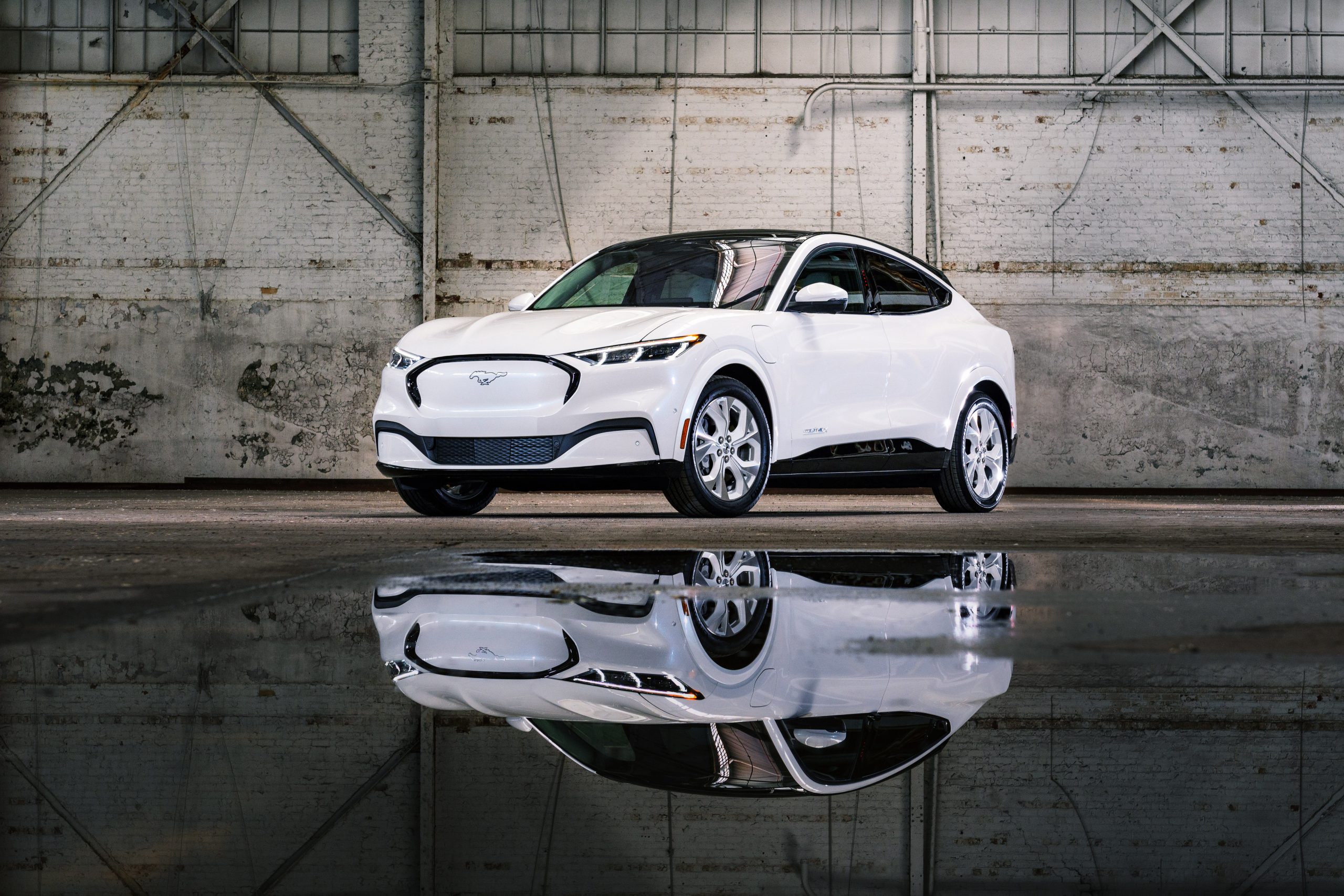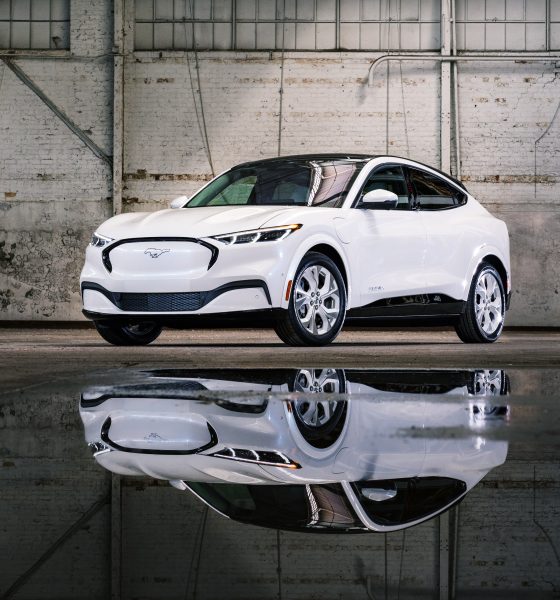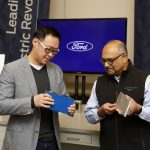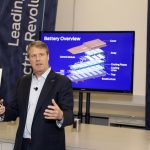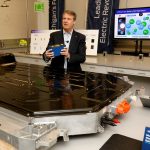Ford has announced that it will build a $3.5 billion battery production facility in the Marshall Township of Western Michigan. The plant comes with an agreement Ford recently confirmed with Contemporary Amperex Technology Co., Limited (CATL).
Ford has the ambitious goal of producing 2 million EVs annually by 2026, and a key element to that plan is a rapid expansion of production. Ford started with “Blue Oval City,” a massive new production and office facility in Tennesee, and has since then begun construction of its first battery production location and enormous expansions of existing factories throughout the U.S.
Now, the company has doubled down, constructing yet another battery production facility, this one in Marshall, Michigan, with the help of CATL.
The $3.5 billion 2,000 acre megasite, while not Ford’s first battery plant, is the company’s first try with LFP, or lithium iron phosphate, batteries. Ford CEO Jim Farley states that these batteries are designed to be cheaper, charge faster, and last longer. LFP battery packs have been used by other automakers, including Tesla, to combat supply shortages.
Ford’s LFP battery design comes from a collaboration with CATL, who will also be helping the company start the Marshall plant as it comes online in 2026.
- Charles Poon, Director, Electrified Systems Engineering, Ford Motor Company, holds a lithium iron phosphate (LFP) battery, while Anand Sankaran, Director, Ford Ion Park, Ford Motor Company, holds a nickel cobalt manganese (NCM) battery. Ford currently uses NCM in its electric vehicles, and will add LFP to its lineup beginning later this year to help it produce more EVs and make them more accessible and affordable for customers.
- Ted Miller, Manager, Ford Battery Cell Research and Advanced Engineering, Ford Motor Company, speaks at Ford Ion Park in Romulus, Mich., on Monday, Feb. 13, 2023, ahead of an announcement where Ford detailed plans to be the first automaker to commit to build both nickel cobalt manganese (NCM) and lithium iron phosphate (LFP) batteries in the U.S.
- Ted Miller, Manager, Ford Battery Cell Research and Advanced Engineering, Ford Motor Company, holds a lithium iron phosphate (LFP) battery during a presentation on Monday, Feb. 13, 2023 at Ford Ion Park in Romulus, Mich. Ford is investing $3.5 billion in the countryÕs first automaker-backed LFP battery plant, offering customers a second battery technology within FordÕs electric vehicle lineup.
Thus far, no Ford EVs currently employ LFP batteries, instead opting for more energy-dense and expensive chemistries. However, that will be changing. This spring, the Ford Mustang Mach-E will be the first Ford EV with the option of LFP battery cells, with more vehicles receiving the same treatment shortly. Ford did not announce how this change will affect the pricing of the Mach-E.
To help fund the plant, the Michigan Strategic Fund announced that it would contribute $210 million on top of funds made available through the Inflation Reduction Act. With the massive stockpile of IRA funds, the Feds are poised to pay anywhere in the range of between $20 and $50 per kWh produced domestically to help with initial production costs. However, that number is highly dependent on material sourcing, operation size, and other factors.
While the project is undoubtedly a great aid to Ford in its mission to electrify its product lineup, it is even better news for Mashall, Michigan, which over the past decade has lost just over 2,000 jobs, according to the “Choose Marshall” organization. With Ford’s infusion of 2,500 new jobs, the entire region is poised to rebound and will likely result in higher standards of living across the board.
Along with nine other new production facilities, Ford is headed toward hitting its 2 million EV run rate and is poised to maintain its position as the second-largest EV brand in the United States. Though, with an equally massive investment being made by General Motors, Stellantis, and others, there is no lack of competition for EV supremacy in the country. Hopefully, more automakers will choose, as Ford has, to invest in the U.S. and work towards growing the number of EVs available for everyone who lives here.
What do you think of the article? Do you have any comments, questions, or concerns? Shoot me an email at william@teslarati.com. You can also reach me on Twitter @WilliamWritin. If you have news tips, email us at tips@teslarati.com!

News
Tesla aims to combat common Full Self-Driving problem with new patent
Tesla writes in the patent that its autonomous and semi-autonomous vehicles are heavily reliant on camera systems to navigate and interact with their environment.

Tesla is aiming to combat a common Full Self-Driving problem with a new patent.
One issue with Tesla’s vision-based approach is that sunlight glare can become a troublesome element of everyday travel. Full Self-Driving is certainly an amazing technology, but there are still things Tesla is aiming to figure out with its development.
Unfortunately, it is extremely difficult to get around this issue, and even humans need ways to combat it when they’re driving, as we commonly use sunglasses or sun visors to give us better visibility.
Cameras obviously do not have these ways to fight sunglare, but a new patent Tesla recently had published aims to fight this through a “glare shield.”
Tesla writes in the patent that its autonomous and semi-autonomous vehicles are heavily reliant on camera systems to navigate and interact with their environment.

The ability to see surroundings is crucial for accurate performance, and glare is one element of interference that has yet to be confronted.
Tesla described the patent, which will utilize “a textured surface composed of an array of micro-cones, or cone-shaped formations, which serve to scatter incident light in various directions, thereby reducing glare and improving camera vision.”

The patent was first spotted by Not a Tesla App.
The design of the micro-cones is the first element of the puzzle to fight the excess glare. The patent says they are “optimized in size, angle, and orientation to minimize Total Hemispherical Reflectance (THR) and reflection penalty, enhancing the camera’s ability to accurately interpret visual data.”
Additionally, there is an electromechanical system for dynamic orientation adjustment, which will allow the micro-cones to move based on the angle of external light sources.
This is not the only thing Tesla is mulling to resolve issues with sunlight glare, as it has also worked on two other ways to combat the problem. One thing the company has discussed is a direct photon count.
CEO Elon Musk said during the Q2 Earnings Call:
“We use an approach which is direct photon count. When you see a processed image, so the image that goes from the sort of photon counter — the silicon photon counter — that then goes through a digital signal processor or image signal processor, that’s normally what happens. And then the image that you see looks all washed out, because if you point the camera at the sun, the post-processing of the photon counting washes things out.”
Future Hardware iterations, like Hardware 5 and Hardware 6, could also integrate better solutions for the sunglare issue, such as neutral density filters or heated lenses, aiming to solve glare more effectively.
Elon Musk
Delaware Supreme Court reinstates Elon Musk’s 2018 Tesla CEO pay package
The unanimous decision criticized the prior total rescission as “improper and inequitable,” arguing that it left Musk uncompensated for six years of transformative leadership at Tesla.

The Delaware Supreme Court has overturned a lower court ruling, reinstating Elon Musk’s 2018 compensation package originally valued at $56 billion but now worth approximately $139 billion due to Tesla’s soaring stock price.
The unanimous decision criticized the prior total rescission as “improper and inequitable,” arguing that it left Musk uncompensated for six years of transformative leadership at Tesla. Musk quickly celebrated the outcome on X, stating that he felt “vindicated.” He also shared his gratitude to TSLA shareholders.
Delaware Supreme Court makes a decision
In a 49-page ruling Friday, the Delaware Supreme Court reversed Chancellor Kathaleen McCormick’s 2024 decision that voided the 2018 package over alleged board conflicts and inadequate shareholder disclosures. The high court acknowledged varying views on liability but agreed rescission was excessive, stating it “leaves Musk uncompensated for his time and efforts over a period of six years.”
The 2018 plan granted Musk options on about 304 million shares upon hitting aggressive milestones, all of which were achieved ahead of time. Shareholders overwhelmingly approved it initially in 2018 and ratified it once again in 2024 after the Delaware lower court struck it down. The case against Musk’s 2018 pay package was filed by plaintiff Richard Tornetta, who held just nine shares when the compensation plan was approved.
A hard-fought victory
As noted in a Reuters report, Tesla’s win avoids a potential $26 billion earnings hit from replacing the award at current prices. Tesla, now Texas-incorporated, had hedged with interim plans, including a November 2025 shareholder-approved package potentially worth $878 billion tied to Robotaxi and Optimus goals and other extremely aggressive operational milestones.
The saga surrounding Elon Musk’s 2018 pay package ultimately damaged Delaware’s corporate appeal, prompting a number of high-profile firms, such as Dropbox, Roblox, Trade Desk, and Coinbase, to follow Tesla’s exodus out of the state. What added more fuel to the issue was the fact that Tornetta’s legal team, following the lower court’s 2024 decision, demanded a fee request of more than $5.1 billion worth of TSLA stock, which was equal to an hourly rate of over $200,000.
Delaware Supreme Court Elon Musk 2018 Pay Package by Simon Alvarez
News
Tesla Cybercab tests are going on overdrive with production-ready units
Tesla is ramping its real-world tests of the Cybercab, with multiple sightings of the vehicle being reported across social media this week.

Tesla is ramping its real-world tests of the Cybercab, with multiple sightings of the autonomous two-seater being reported across social media this week. Based on videos of the vehicle that have been shared online, it appears that Cybercab tests are underway across multiple states.
Recent Cybercab sightings
Reports of Cybercab tests have ramped this week, with a vehicle that looked like a production-ready prototype being spotted at Apple’s Visitor Center in California. The vehicle in this sighting was interesting as it was equipped with a steering wheel. The vehicle also featured some changes to the design of its brake lights.
The Cybercab was also filmed testing at the Fremont factory’s test track, which also seemed to involve a vehicle that looked production-ready. This also seemed to be the case for a Cybercab that was spotted in Austin, Texas, which happened to be undergoing real-world tests. Overall, these sightings suggest that Cybercab testing is fully underway, and the vehicle is really moving towards production.
Production design all but finalized?
Recently, a near-production-ready Cybercab was showcased at Tesla’s Santana Row showroom in San Jose. The vehicle was equipped with frameless windows, dual windshield wipers, powered butterfly door struts, an extended front splitter, an updated lightbar, new wheel covers, and a license plate bracket. Interior updates include redesigned dash/door panels, refined seats with center cupholders, updated carpet, and what appeared to be improved legroom.
There seems to be a pretty good chance that the Cybercab’s design has been all but finalized, at least considering Elon Musk’s comments at the 2025 Annual Shareholder Meeting. During the event, Musk confirmed that the vehicle will enter production around April 2026, and its production targets will be quite ambitious.
